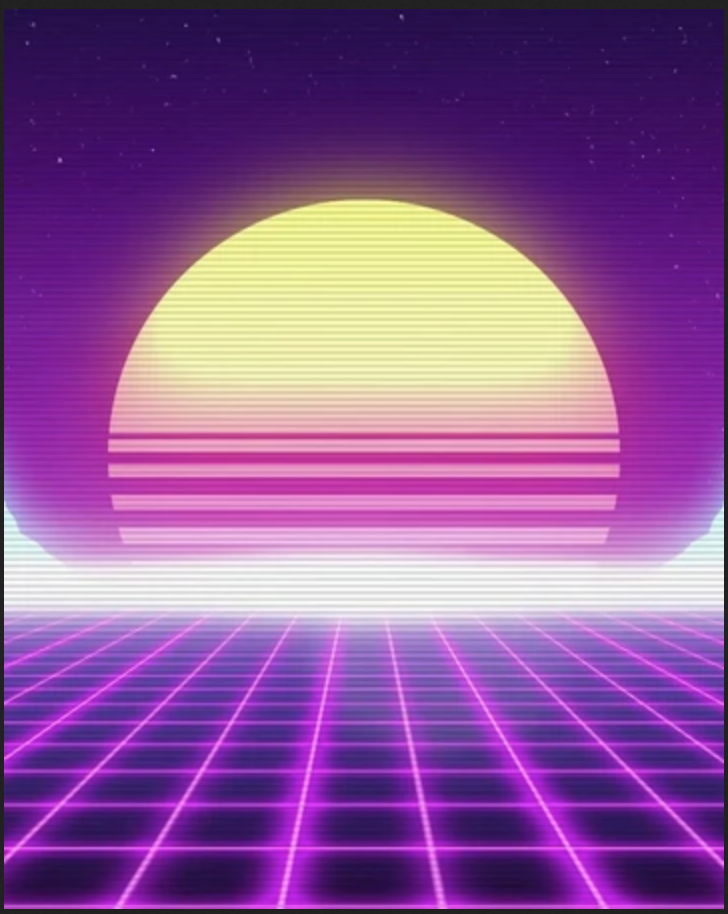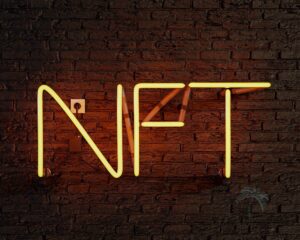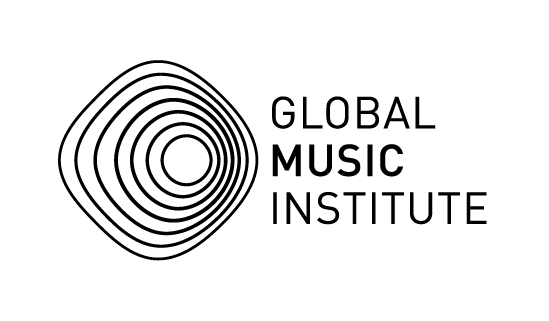
17 Sep NFT Corner: Chapter 1
HUSTLED?: THE DILEMMA OF THE MODERN MUSICIAN
Hello GMI tribe! My name is Devon Hurt. Some of you know me from my 2019 semester as faculty, while others I haven’t gotten the chance to meet yet. I’m here to welcome you to the world of verifiably unique digital art known as NFTs (or Non Fungible Tokens). This series will aim to give you a working knowledge of this emerging digital artspace and, perhaps even more importantly, a strong understanding of WHY this is happening at this moment in our history. This “Why” will be the primary topic of this first installment because any deep understanding of NFTs (or any large concept for that matter) needs to begin with the problem it’s trying to solve.
I’m sure you’ve all heard the (supposedly) ancient Chinese curse – “May you live in interesting times.” The implication is that “interesting times” bring upheaval, struggle, and death with them. But even as a kid, that phrase seemed outdated to me. It clearly came from a time when the world’s cultures were isolated from each other: by language, by distance, by boogeyman stories. Maybe at some point in history, there was a sense of tranquility and peace that came from isolation, but that ship sailed hundreds of years ago. We live on the world stage now, and by my estimation, we haven’t lived in “uninteresting” times for at least a few hundred years straight. We certainly had a rough go of it in the beginning – the (theoretical) ancient Chinese would have felt validated if they’d seen the results of how “connected” we were for the first few centuries of the global stage. But as we’ve gone on, that’s begun to change. We’ve gone from nation-states communicating with each other – usually in their default language of violence and coercion – to communication with each other individually.
I’m talking now, of course, about the great connector and our best idea so far as a species in my opinion – the internet. At its core, it’s been an overwhelming success. Having the entirety of human knowledge at our fingertips,and having a window to anywhere in the world, has helped foster a sense of universal humanity that sociologists and politicians thought impossible even 50 years ago. It’s been an overwhelming net positive for the species and this is important to stress. But as anyone living in our times can attest, this connectivity has come with some novel, and sometimes overwhelming-seeming downsides. The rampant spread of misinformation, the curdling of a healthy distrust of authority into paranoia, the cold indifference of the various algorithms that increasingly guide our online lives… Books can and have already been written on these issues. And since we’re artists, and this is a blog for a Music school, we’re forced, like anyone else, to view the implications on our own practice. Frankly, as a working artist, particularly as a musician, the past 100 years has been nothing short of disastrous.
 On the surface, that might seem like an absurd statement: “But DEVON! The internet has given us access to a near infinite audience! Artists from all around the world can interact, exchange ideas!” These things are of course true, and have been an absolute boon for the world’s art and music lovers. In fact, I think you could argue that there has never been a greater supply of brilliant artists, in every medium and genre, in the history of the world. But as artists, I still contend it’s been a disaster
On the surface, that might seem like an absurd statement: “But DEVON! The internet has given us access to a near infinite audience! Artists from all around the world can interact, exchange ideas!” These things are of course true, and have been an absolute boon for the world’s art and music lovers. In fact, I think you could argue that there has never been a greater supply of brilliant artists, in every medium and genre, in the history of the world. But as artists, I still contend it’s been a disaster
To understand why, we need to consider two questions. First, what is art? I know, I know… A famously argued-over question, but one that I contend has a simple answer if you let it- the ultimate form of human self expression. What that means is of course different for each of us, but I think most people would agree that’s at the core of it. Or put a little differently: it’s what humans do to feel human. The second question is a little dicier. What is the value of art? More specifically, what is the value of a particular piece of art? For a very long time, the value of a piece of art would come from the fact that it was one-of-a-kind, and from the amount of time and skill put into it by the artist. But what happens when we can make a copy of that piece of art, mechanically? Furthermore, what happens when that piece of art is infinitely replicable?
Musicians are all too familiar with this dilemma, known as the “Napster problem.” If a piece of music or art can be reproduced infinitely, for zero cost no less, we lose a fundamental baseline for determining the value of anything – the cost to produce. Without that, we’re left with the much fuzzier proposition of putting a price on the value of the art itself. Thankfully for music, we didn’t settle as a society for Napster’s proposed value of free, or Limewire’s free-with-viruses. Artists have to eat after all, and the record industry was strong enough to lobby for laws to stave off the problem. But consumers had become accustomed to the standardized pricing the record label system provided, and there was a strong appetite to keep that standardization for the new online world. And just like that, a fuzzy task becomes an impossible one. We no longer just need to determine the value of a specific piece of music, but to the value of any piece of music. Just a ludicrous endeavor: given that no two pieces of music or two listeners are the same, how could you possibly put a number on the relationship between any given listener and any given song? But we had to come up with a number, and Apple led the way with the iTunes music store in 2003, charging 10 dollars US an album and 1 dollar a song. This was just a bit lower than physical albums at the time, and it made sense to set it at a point people were used to. But it’s still ultimately an arbitrary number without any physical manufacturing cost, and the following 18 years have seen a race to the bottom that’s culminated in the streaming model of $.001 dollars per play, paid out from a service that charges $10 per month for most of the music ever recorded.
 And this is the dilemma of the modern artist. Yes, we have the whole world as a potential audience. But the value of our art to that audience has been pre-negotiated for us, and set in such a way that our only route to a living is reaching the largest audience possible. And it’s not just your route… If we’re all competing with all the artists on earth for a living, then it changes the role of art itself,where in order to be successful, a piece of art needs to grab and hold the attention of as many people as possible. After all, if there’s a near infinite supply of worthwhile art, for a fraction of a penny each, why does anybody owe your art their attention?
And this is the dilemma of the modern artist. Yes, we have the whole world as a potential audience. But the value of our art to that audience has been pre-negotiated for us, and set in such a way that our only route to a living is reaching the largest audience possible. And it’s not just your route… If we’re all competing with all the artists on earth for a living, then it changes the role of art itself,where in order to be successful, a piece of art needs to grab and hold the attention of as many people as possible. After all, if there’s a near infinite supply of worthwhile art, for a fraction of a penny each, why does anybody owe your art their attention?
We’ll discuss what NFTs can do to address this problem in the next installment, but in the meantime I’d like you to consider that question, and the following ones as well: can you think of a time you’ve changed a piece of your work to more effectively grab the attention of listeners? If so, how did it affect the artistic statement you were trying to make? What would you do differently if you knew you could count on the attention of your audience?
Suggested additional reading:
https://newleftreview.org/issues/ii92/articles/fredric-jameson-the-aesthetics-of-singularity
—-
Devon Hurt is a composer and improvisor, currently based in the greater Boston area of the United States. Since graduating with an MM in Contemporary Improvisation from New England Conservatory of Music in 2017, he has performed and taught all over the world. His work attempts to address the role of music and art in an increasingly complicated and connected world. His group Tiny Circus attempts to expand the tradition of improvised music, by incorporating the musical languages of different modern electronic musics, including Drum and Bass, Lofi, and Footwork. He is also the founder of the GIF Economy, a decentralized NFT auction house on the Algorand blockchain.



Renn
Posted at 23:17h, 17 SeptemberThis is a great piece!
Mark Nokes
Posted at 02:25h, 18 SeptemberLooking forward to the next installment!